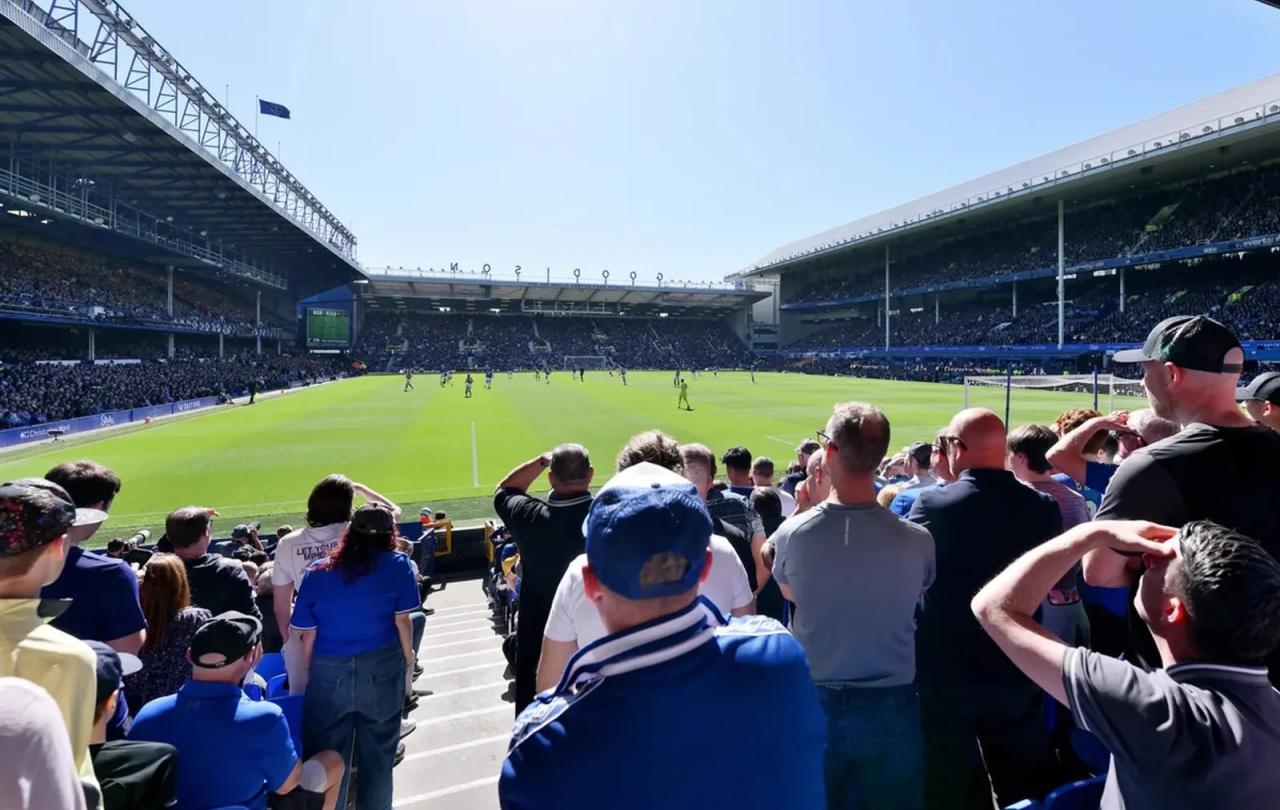
Late in the evening of May 20, over 80 refugees clambered aboard the small boat that was to bring them to England. They had not gone far when French rescue services were summoned with the boat still located off the Pas de Calais. An eight-year-old boy and a 40-year-old woman were pronounced dead by the medical team and taken to Calais. Both were believed to be Turkish nationals, with their deaths presumed to have been caused by a combination of crushing and suffocation. The small boat continued its journey without them, though 10 others were also evacuated.
This story is deeply shocking.
What is also profoundly disturbing is that, while we may not be aware of the details of this particular case, the story is still familiar to us. According to the University of Oxford’s Migration Observatory there were 73 deaths crossing the Channel in 2024.
It was almost 30 years ago, in the wake of the UK’s 1996 Immigration & Nationality act that I first became aware of the issues surrounding refugees and asylum seekers. Our church in Croydon was only a short walk from the Home Office’s Immigration and Nationality Directorate based at Lunar House, and it seemed to make sense to begin a drop-in centre. The Croydon Refugee Day Centre has continued its work ever since.
From the beginning it was hard to miss the fact that asylum was a hot-button issue. The reactions it triggered were intense. I also quickly discovered that nothing was straight-forward. Weaponised politics, the labyrinthine complexity and glacial slowness of our state bureaucracy along with the internecine nature of the charitable sector made collaborating with others frustrating and problematic to say the least.
Over the years I’ve learned two important lessons with regard to immigration and asylum. First, what grabs the headlines is not necessarily the most important issue. Indeed, it can deflect attention, action and resources from what is of primary significance. Then, second, complex issues are rarely solved by simple, straight-forward, 'silver bullet’ solutions. As the American satirist H. L. Mencken observed:
“Every complex problem has a solution which is simple, direct, plausible—and wrong.”
So, with the issue unlikely to go away in the foreseeable future, these are some of the things I believe we need to understand and have an eye to.
Immigration: don’t get confused
When the Office for National Statistics reported in May that the total of long-term immigrants to the UK in 2024 was 948,000, that really does seem like a very big number. And it is. But it includes everyone coming to the UK who is changing the normal place where they live. It includes those who’ve come to study here (30 per cent) and those who’ve got a UK-based job (33 per cent).
The foreign students on full fees raise vital revenue for the universities and subsidise the fees for home students, and those coming to work here make a significant contribution to the economy. Not to mention the legacy of ‘soft’ influence when both return home having had positive experiences of life in the UK.
Incidentally, and a little out of left field, the immigration figure also includes Brits returning home from living abroad. In 2024 they accounted for 60,000 individuals, or 6.3 per cent of the total.
Asylum seekers and refugees only make up 15 per cent of the overall number (including the Homes for Ukraine scheme), with those claiming asylum from the small boats only 5 per cent.
The small boats: don’t get distracted
Perhaps the main reason for the small boats featuring so prominently in the immigration narrative is the compelling nature of the images the news media can use. Include criminal gangs and the jeopardy of life and death and the result is a heady mix.
But here’s the thing, the Migration Observatory report that:
“Between 2018 and 2024, the asylum grant rate for people who arrived by small boat was 68%.”
Allow that to sink in for a moment: almost seven out of ten of those who arrive by small boat have a legitimate reason to seek asylum in the UK. The real villains here are the criminal gangs, not the passengers they transport.
Things could look very different if there were safe pathways for these asylum seekers to follow. On these figures the bottom would be blown out of the business model of the criminal gangs that operate the small boats, and they would swiftly move on. Especially if accompanied with the speedy removal of those who have no right to remain in the UK. This would act as a significant disincentive to those who would have previously made an unsuccessful attempt.
This has to be the way to tackle the presenting problem of the small boats, especially when the ‘push and pull’ influences are given proper consideration.
‘Push’ and ‘pull’: don’t be misled
‘Push’ issues are those that cause the migrants to leave their home. Iran, Iraq and Afghanistan have consistently been the most common sources for asylum seekers over the last 30 years. and this tells its own story. Together they underscore that the key ‘push’ factor is people seeking to escape persecution, conflict or danger.
‘Pull’ influences are why a particular country is the preferred destination. Extensive research has established in the case of the UK the ability to speak English, the presence of family already here and the “general impression that the UK is a good place to live" are far and away the strongest influences. Disproving the popularly advocated myth that it is about the black economy or sponging off the benefits system.
The right to work: don’t be fooled
The total cost of the asylum system in the UK was an eye-watering £5.4b in 2023-24, a figure that is largely driven by a backlog in processing applications. On average this took 413 days in 2023-24 with the year-end backlog standing at 91,000. For the 38,000 of those awaiting a response in hotel accommodation, this comes at a cost of £41,000 per person, per year.
Thankfully the number awaiting a decision is decreasing, but because asylum seekers are not allowed to work until they’ve been waiting for over a year, they cannot contribute to their own support. In France they are allowed to work after six months and in Italy after only 60 days.
It is, perhaps, a sobering thought that those who have shown the initiative, resilience and tenacity to attempt a passage to a new life, not even deterred by the threat of death, might be the kind of asset to the country and its economy that we need.
The world we live in: don’t close your eyes
We cannot uninvent the fact that we live in a globalised world. The preponderance of international supply chains and the fact that 54 per cent of Brits travel abroad on holiday only underlines how ingrained it is in our everyday lives. We are all interconnected to a degree that we cannot possibly comprehend.According to the World Health Organisation, the origin of COVID-19 in Wuhan, China in December 2019 led to between 8-9 million deaths worldwide; the container ship Ever Given, stuck in the Suez Canal in March 2021 cost the global economy $9.6 billion per day; and the Russian invasion of Ukraine in 2022 had a catastrophic effect on grain and fertilizer prices in sub-Saharan Africa.
All that to one side, migration to these shores has been part and parcel of our history since before we had a history. From the Romans, Anglo-Saxons, Vikings and Normans, to more recent arrivals from the Caribbean, South Asia, Poland and Hong Kong this is an integral and ongoing part of the story of the British Isles. It is what has made us British.
The politics of migration: don’t be seduced
In these febrile political times, many will be quick to jump on the bandwagon of blaming the immigrants for everything that is wrong. The narrative is a seductive one that makes a visceral connection with listeners. Where the substance of argument is missing emotive language will do the heavy lifting on its own, so look out for speech like this:
- Crisis or emergency language: out-of-control, unprecedented, overwhelmed
- Metaphors of flooding or invasion: tidal, swamped, relentless
- Threatening or dangerous terms: illegal, criminal, extremist
- Dehumanising or reductive language: waves, swarms, hordes
- Economic or social burden framing: unsustainable, overstretched (services), job-stealing
- Warnings of loss: losing our culture and traditions, no-go areas
It’s the sociologist Zygmunt Bauman, commenting on life in the city, who coined the terms ‘mixophobia’ and ‘mixophilia’ to describe some of the dynamics he observed. But I think they can extend to the whole of society, not just our cities. Indeed, with Bauman I think we can even experience both feelings within ourselves at the same. We experience the fear of ‘mixophobia’ – of being involved with strangers – in our
“… reaction to the mind-boggling, spine-chilling and nerve-breaking variety of human types and lifestyles that [we] meet and rub elbows and shoulders [with] in the streets”
“Mixophilia”, by contrast, is the joy of being in a different and stimulating environment.
“The same kaleidoscope-like twinkle and glimmer of the urban scenery, … never short of novelty and surprise, [that] constitutes its difficult-to-resist charm and seductive power.”
Born a Polish Jew in 1925, Bauman’s family fled to Russia in 1939. As Professor of Sociology at the University of Leeds t He maintained that the holocaust was not the breakdown of modern civilisation, but rather the product of it.
Twenty years ago, he predicted that Europe would be faced with a battle between “two contending facts of the matter”. On one side would be the life-saving role played by immigrants in a fast-aging Europe. On the other, “the power-abetted and power-assisted rise in xenophobic sentiments eagerly recycled into electoral votes”.
For Bauman “mixophobic paranoia” feeds upon itself and acts as a self-fulfilling prophecy. It may temporarily reduce the pain that those afflicted by it feel, but ultimately only makes the condition worse. Rather, “mixophobia” is the symptom of their anxiety, not the cause – acting on it is like “removing the rash while mistaking it for the cure of the illness”.
If there is to be any hope for him, it is in the cohabitation and interaction with strangers that the future lies.
So, there it is. As shocking and disturbing as the stories and images of the small boats are, it is not really about the small boats. Sitting beneath the phenomena is the age-old issue of migration, with the sharp and divisive edges of its present-day expression.
In the late 1990s I was proud of the churches in Croydon rallying together to establish the Refugee Day Centre. In the years that followed it was often groups of churches who took the lead in their own towns and cities as asylum seekers were dispersed around the country.
It was a practical way to “love our neighbour as ourselves”. In the rallying cry of the Victorian Christian social reformers, “The Fatherhood of God means the brotherhood of man.”
As the historian Tom Holland has observed it is because Western values are deeply rooted in the Christian tradition that human dignity and the sanctity of life are deeply prized virtues that animate our best intentions and our understanding of what is good.
In his mid-80s, Bauman wrote:
“For more than forty years of my life in Leeds I have watched from my window as children returned home from the nearby secondary school. Children seldom walk alone; they prefer walking in groups of friends. That habit has not changed. And yet what I see from my window has changed over the years. Forty years ago, almost every group was ‘single colour’; nowadays, almost none of them are …”





